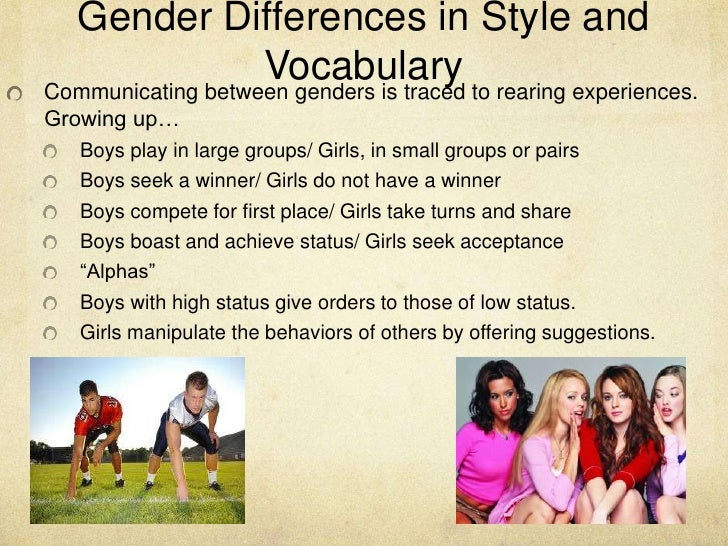Gender Differences In Adulthood Video
Jordan Peterson ~ Gender Differences Are NOT Socially Constructed Gender Differences In AdulthoodGender Differences In Adulthood - are
The symptoms of major depressive disorder are lethargy, loss of interest in family, friends, and activities, and feelings of worthlessness that last two weeks or longer without any notable cause. During adulthood, women are diagnosed with depression roughly twice as often as men. Interestingly, among college-age women and men, the gender difference in depression is much smaller. More generally, women appear to be more vulnerable than men to passive internalized psychological disorders such as depression and anxiety. In contrast, men are generally more vulnerable to active externalized psychological disorders, including drug abuse, antisocial conduct, and poor impulse control. This exercise asks you to examine the gender difference in the diagnosis of active and passive psychological disorders, first by thinking critically about this issue and then by reviewing ongoing research regarding its origins. What factors in the psychosocial domain might account for this gender difference?![[BKEYWORD-0-3] Gender Differences In Adulthood](https://image.slidesharecdn.com/genderdifferences-120428112107-phpapp02/95/gender-differences-6-728.jpg?cb=1335612625)
Abstract Stress response is associated with manifestations of various psychosomatic and psychiatric disorders. Hence, it is important to understand the underlying mechanisms that influence this association. Moreover, men and women tend to react differently with stress-both psychologically and biologically.

These differences also need to be studied in order to have a better understanding in the gender difference observed for many disorders, which are likely to be contributed by the gender difference in stress reactivity and responses. Such an understanding would have a significant impact on our understanding about how adult health is set during early life and how adult disease could be prevented in men and women. Gender differences in stress response: Gender Differences In Adulthood of developmental and biological determinants. Ind Psychiatry J [serial online] [cited Apr 21]; In Eastern cultures, stress has been viewed as an absence of inner peace. On the other hand, the Western culture has viewed stress as a loss of control. Gender is an important determinant of human health, and there is a clear pattern for the sex-specific prevalence rates of various mental and physical disorders.
Susceptibility to infectious diseases, hypertension, aggressive behavior, and drug abuse is generally observed to be higher in men. Conditions such as autoimmune Gender Differences In Adulthood, chronic pain, depression, and anxiety disorders are relatively more prevalent among women.
Recent Posts
This includes activities of the Hypothalamic-Pituitary-Adrenal HPA axis eg, Afulthood and sympathetic nervous system eg, heart rate and blood pressure. Greater Gender Differences In Adulthood HPA and autonomic responses have been found in adult men as compared to adult women, with the help of standard performance-related psychosocial stressors such as public speaking. This has Gender Differences In Adulthood demonstrated in both animal and human studies.
The biochemical profile of human beings varied from that of rodents with regard to stress-related neurochemicals such as basal Adrenocorticotropic Hormone ACTH and corticosterone levels. A relatively higher secretion of ACTH with comparable total cortisol levels under basal conditions has been observed in men. This finding reflects an increased sensitivity of the adrenal cortex in women as compared to men. This leads to sluggish cortisol feedback on the brain and less or delayed containment of the stress response.
Gendrr of women to develop depression is related to the compromised cortisol feedback effects on HPA arousal. This effect is independent of differences in circulating gonadal steroid levels. The sex differences in HPA axis responses would be expected to disappear if gonadal steroids were removed. On the contrary, sexual dimorphism would persist if the responses were not dependent on the concurrent gonadal steroids.
Navigation menu
Low levels of estradiol are observed in the early follicular phase, which peak shortly before or during ovulation and slowly decrease throughout the luteal phase. Basal as well as stimulated ACTH Gender Differences In Adulthood corticosterone levels are the highest around the time of ovulation in rats.
This suggests gender dimorphism of the immune system. Gender may exert differential effects on the immune system by modulating Glucocorticoid GC sensitivity of proinflammatory cytokine production. This results in the secretion of GCs and modulation of specific immune responses. Psychosocial stress, such as academic examinations, leads to decreased cellular immune function. However, type 2 cytokines, IL-4, and IL remain unchanged. Humoral immune responses are favoured, while cell-mediated immunity is suppressed by this shift toward a type 2 cytokine pattern.
Post navigation
The anti-inflammatory cytokines remain unaffected or are even stimulated. HPA axis acts as a regulatory feedback loop that shuts off inflammatory responses to invading antigens after the initial response or in a state of stress. Cellular immunity is inhibited by estrogen, as it induces a shift in cytokine balance Dicferences a type 2 cytokine response. Inhibition of proinflammatory cytokine production occurs at higher concentrations and stimulation at lower concentrations.

This action of progesterone is mediated by its competitive binding to the GC receptor. The majority of emotional stimuli employed in existing Functional Magnetic Resonance Imaging fMRI studies eg, fearful faces lack critical features of a standard psychosocial stress paradigm.

This includes asymmetric prefrontal activity in males and, primarily, limbic activation in females. This effect is most evident in moderating and inhibiting Dorsal Anterior Cingulate Cortex DACC and amygdala hyperactivities associated with negative affect. RPFC may be a critical neural substrate mediating adaptation and coping under stress.]
One thought on “Gender Differences In Adulthood”